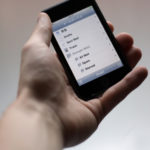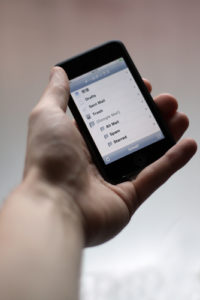
Tony Brown didn’t set out to overhaul his college’s policies on intellectual property. He just wanted an easier way of tracking local apartment rentals on his iPhone.
The University of Missouri student came up with an idea in class one day that spawned an iPhone application that has had more than 250,000 downloads since its release in March 2009.
The app created by Brown and three other undergraduates won them a trip to Apple headquarters, along with job offers from Google and other technology companies.
But the invention also raised a perplexing question when university lawyers abruptly demanded a 25-percent ownership stake and two-thirds of any profits: Who owns the patents and copyrights when a student creates something of value on campus, without a professor’s help?
“We were incredibly surprised, and intimidated at the same time,” Brown said. “You’re facing an institution hundreds of years older than you, and with thousands more people. It was almost like there were no other options than to give in.”
The issue has been cropping up on campuses across the nation, spurred by the boom in computer software in which teenagers tinkering in dorm rooms are coming up with products that rival the work of professional engineers.
Universities have had longstanding technology transfer rules for inventions by faculty, generally asserting partial ownerships rights to technology created with university resources that have commercial potential. For students, though, technology transfer policies often were vague, because cases didn’t come up very often.
With new apps worth big money, the legal questions are now being debated across academia.
Many universities “generally seek to retain ownership, or at least have a formalized mechanism for assessing ownership of a student’s work in much the same way they would regarding a faculty member’s work,” said Joshua Powers, an Indiana State University professor who studies campus technology transfer.
Students who create something might face the burden of showing their work in no way benefited from being at the university.
But Missouri relented in Brown’s case. It also wrote rules explicitly giving student inventors the legal right to their unique ideas developed under specific circumstances.
If the invention came from a school contest, extracurricular club, or individual initiative, the university keeps its hands off. If the student invention came about under a professor’s supervision, using school resources or grant money, then the university can assert an ownership right—just as it does for faculty researchers.
No estimate exists on the number or value of student inventions or apps on the market.
The Association of University Technology Managers and other industry groups don’t track the number of schools that have defined legal protections for student inventors. But technology managers at Missouri and elsewhere suggest the argument for protecting student rights is growing.
“We need to be able to adopt policies that reflect our culture,” said Chris Fender, director of technology management and industry relations at the Columbia campus.
The financial stakes in campus-born inventions are substantial enough that faculty members and universities periodically wind up in lawsuits over them. But Missouri and some other universities are hoping that giving students more rights, along with other incentives to invent, will make the institution more attractive to young entrepreneurs.
Carnegie Mellon University in Pittsburgh sponsors a project that offers off-campus incubator space, faculty guidance, and institutional support to student entrepreneurs who have created dozens of new businesses in recent years. The program recently earning the Pittsburgh school a $100,000 award from the Ewing Marion Kauffman Foundation in Kansas City.
Yale University is also trying to promote student entrepreneurship. “We had a great many students trying to create their own inventions, but we really hadn’t paid them much attention,” said Jim Boyle, director of the Yale Entrepreneurial Institute. “It’s not just the faculty, and the things they create in the labs.”
Since its start in early 2007, the Yale University student club has helped launch more than 40 businesses, raised $25 million for start-up costs, and led to the creation of 90 full-time jobs in New Haven, New York, and Boston, Boyle said.
“We’re learning as much from the students as they’re learning from us,” Boyle said.
But Carnegie-Mellon program coordinator Babs Carryer said an earlier mindset still lives on in academia, in which students are considered anonymous grunts at the service of faculty researchers.
“That old paradigm still exists,” she said. “I know there are a lot of labs where the students are still indentured servants.”
For Brown, who is now a 22-year-old graduate student in journalism at Missouri, his app, NearBuy, was more of a professional foot in the door than a financial success.
It was free app for prospective home buyers and apartment hunters, and he had little time for marketing or product development after starting graduate school in the fall. He parlayed the creation into a product development job at Newsy.com, a local online video news service.
But the assurance that he will have the legal rights to any future classroom brainstorms is encouraging, he said.
“It would have been terribly frustrating if the door had closed after we went through,” he said.
- Research: Social media has negative impact on academic performance - April 2, 2020
- Number 1: Social media has negative impact on academic performance - December 31, 2014
- 6 reasons campus networks must change - September 30, 2014

